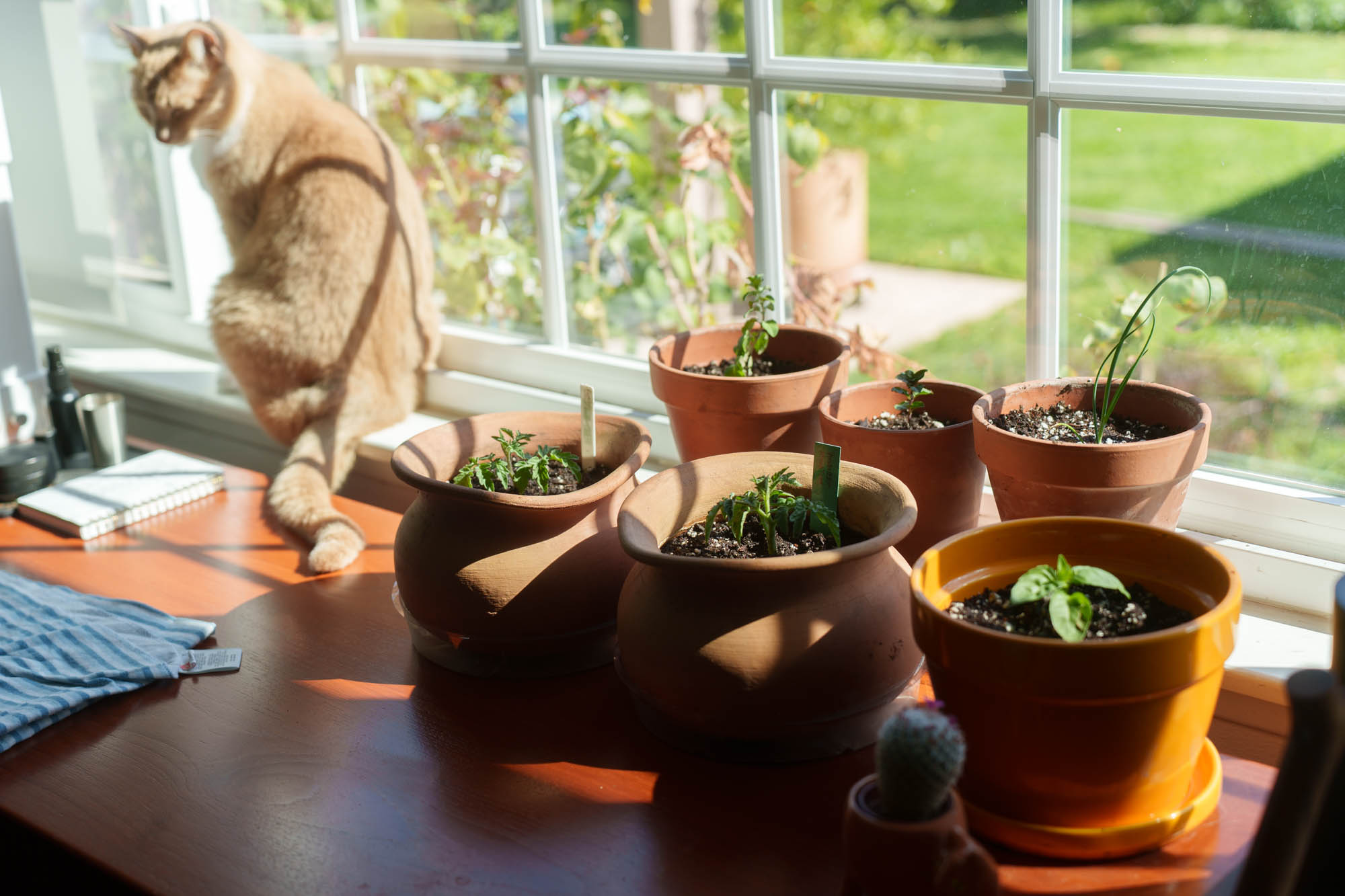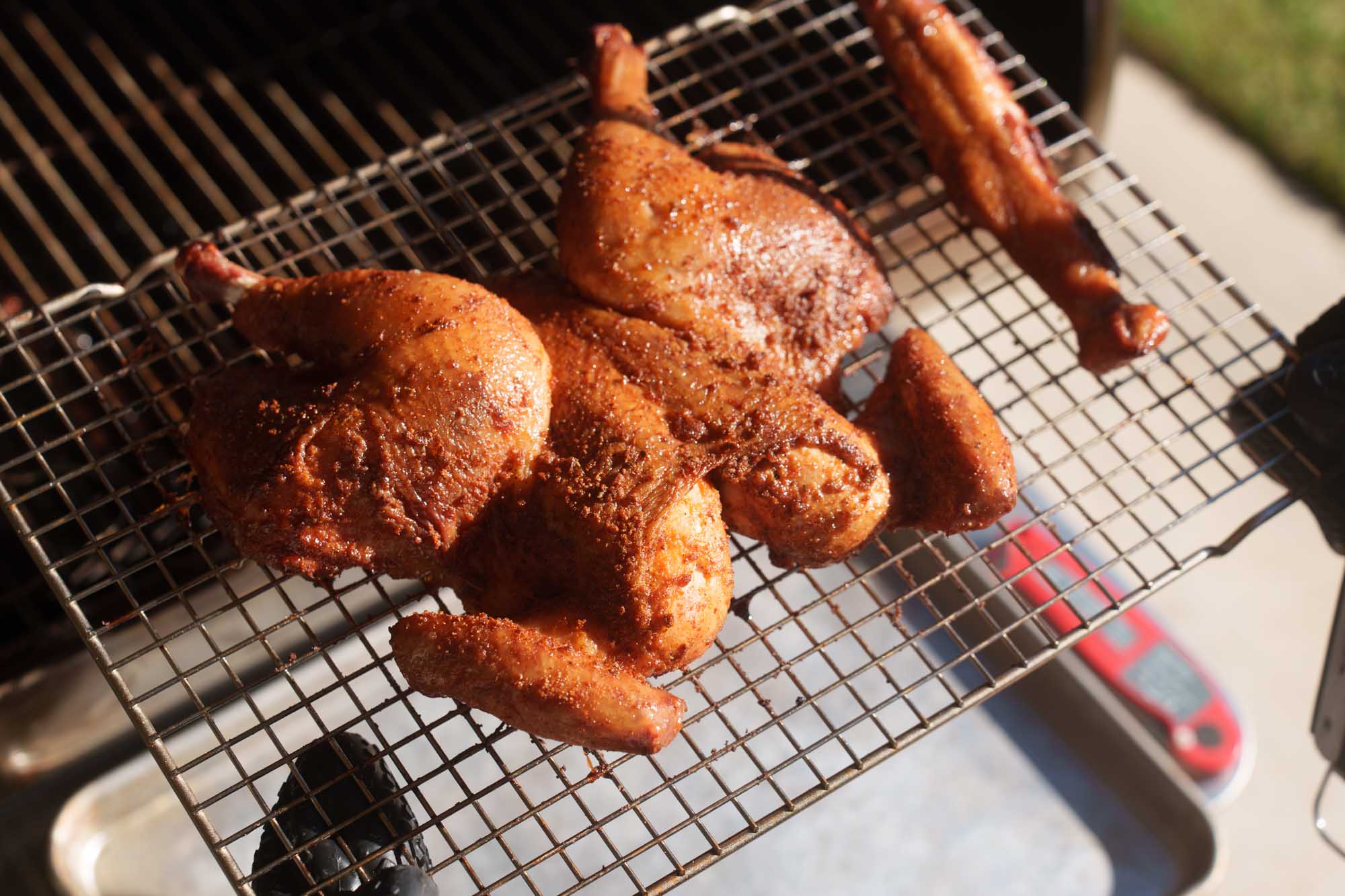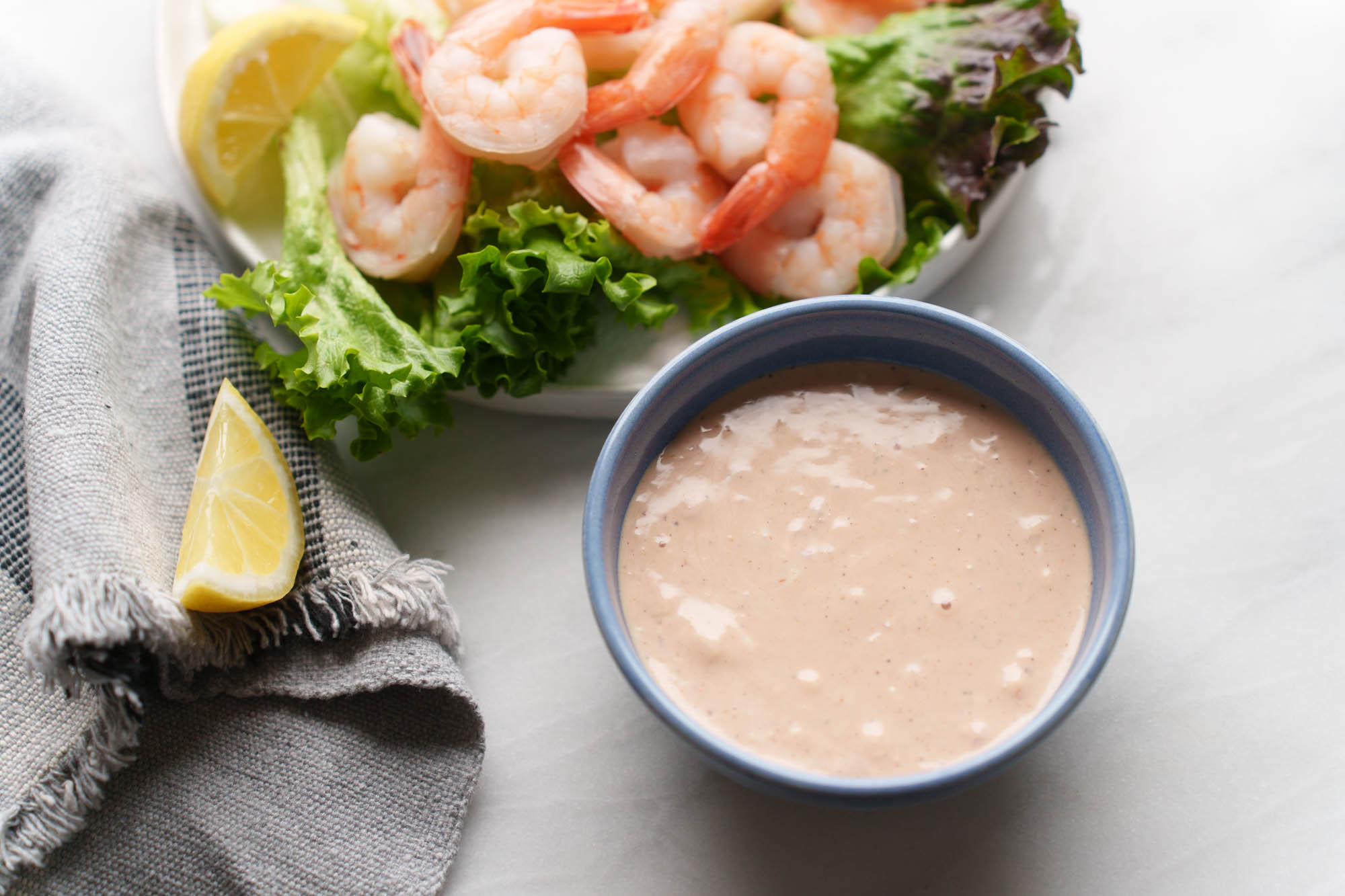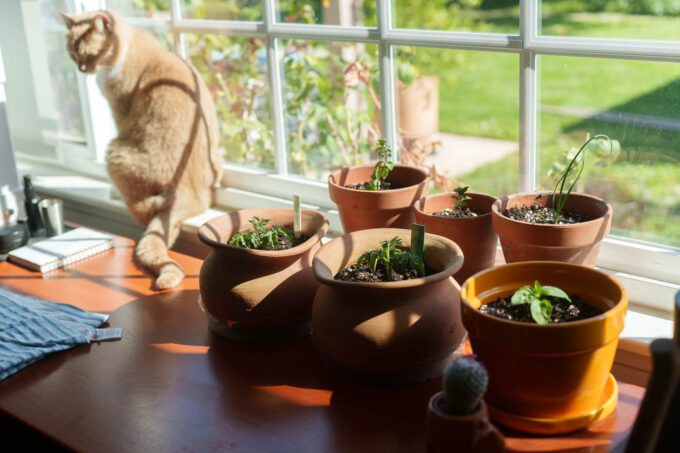
Enjoy the luxury of fresh herbs all year round by cultivating an indoor garden. Creating an indoor herb garden is an excellent choice for those residing in apartments or smaller spaces, as it allows you to tailor the setup and variety to fit your environment.
What Herbs Should You Choose?
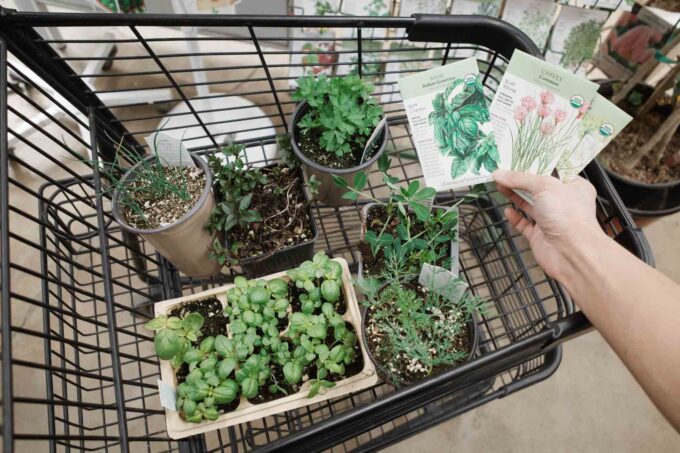
Before visiting your local nursery to purchase seeds or plants, it’s wise to identify which herbs thrive indoors. For beginners, I recommend starting with two to three different herbs to simplify maintenance.
While most herbs are annuals (requiring annual planting) or perennials (which continue to grow for years after being planted), indoor herbs often behave like perennials due to limited space for their root systems. Keep in mind that some varieties may need to be replanted in the future.
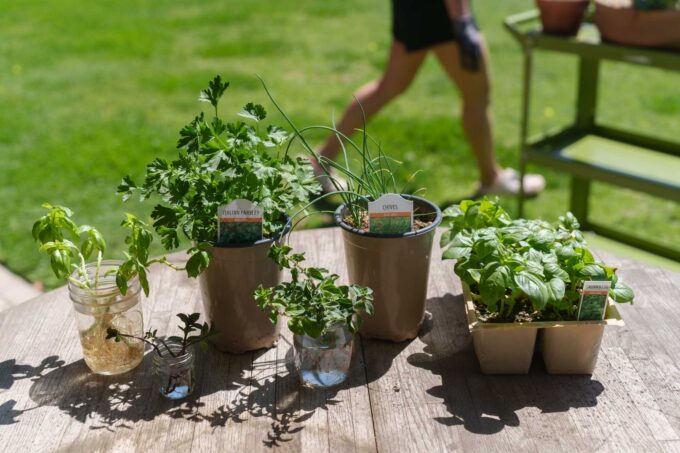
Here are some herbs that thrive indoors:
- Mint: Grows quickly and easily but requires its own pot.
- Chives: Can flourish in shaded areas and occupy minimal counter space.
- Green Onions: Easily regrown from kitchen scraps; they prefer well-draining soil and can be harvested year-round.
- Basil: An annual herb that is readily available in grocery stores and can be repotted or propagated from cuttings. Ensure it receives moist soil and ample sunlight.
- Parsley: A biennial herb that grows well indoors; keep the soil lightly moist and place it by a sunny window.
Conversely, there are herbs that are not recommended for indoor growth:
- Rosemary: Requires high humidity to mimic its Mediterranean habitat.
- Lavender: Needs both humidity and excellent drainage.
- Fennel: Has a large root system, making it unsuitable for small indoor pots.
- Tarragon: Toxic to cats, so it’s best avoided if you have feline companions.
Where to Keep Indoor Herbs
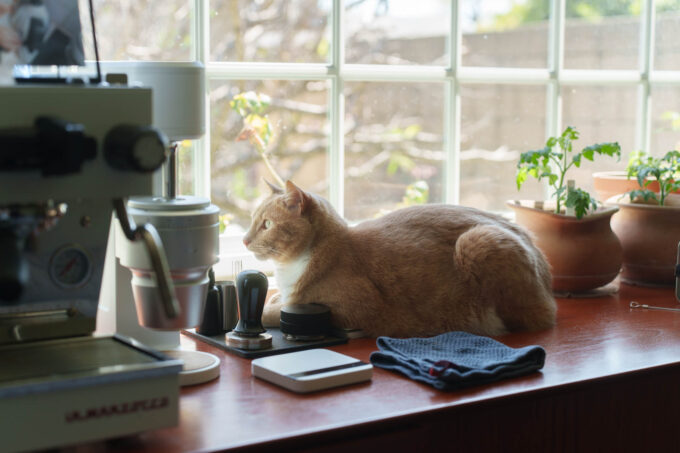
Next, determine the ideal location for your indoor herb garden. Most herbs require around 6 hours of direct sunlight daily to thrive, although some, like cilantro and chives, can manage with 2-6 hours. If using a window, rotate the pots every few days to ensure all parts of the plant receive adequate light.
If natural sunlight is insufficient, consider using artificial light or specialized growing systems. For those without a south-facing window, a grow light with two 40-watt cool fluorescent bulbs can provide the necessary illumination for 14-16 hours a day.
Hydroponic and aeroponic systems are also viable alternatives, providing their own lighting. Hydroponics involves growing plants in water, while aeroponics suspends roots in air and sprays them with nutrients and water.
Pros of Hydroponic Systems:
- Comprehensive systems that include containers, lights, and beginner seeds.
- Beginner-friendly, making it easier to start growing.
- No need to place them by windows.
- Some systems come with apps for plant care and notifications.
Cons of Hydroponic Systems:
- Initial setup and ongoing maintenance can be costly.
- Liquid fertilizer is necessary for growth.
- Continued purchases from the hydroponic company may be required for new seeds.
- Limited space for larger plants.
- Potential system failure could necessitate replacing the entire setup.
Where to Buy Seeds & Plants
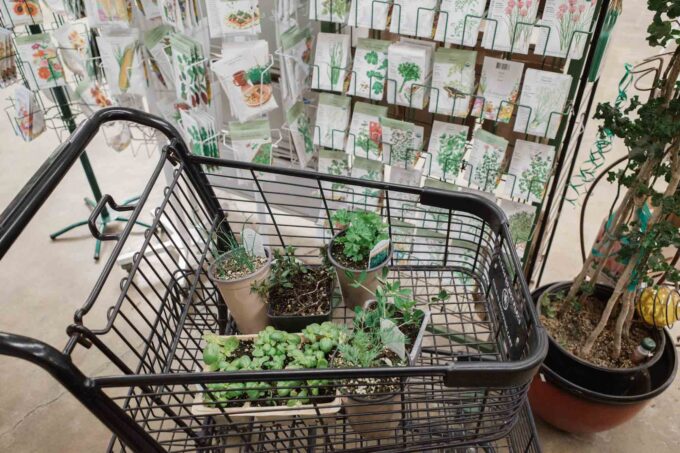
There are several ways to acquire herbs for your indoor garden: planting seeds, purchasing seedlings from a nursery, or propagating from cuttings.
Starting herbs from seeds is the most economical approach, though some herbs, like basil or lavender, can be challenging to germinate. Here are a few herbs that are generally easy to sprout:
- Lemon Balm
- Thyme
- Parsley (or Coriander)
I prefer to buy seeds from reputable brands such as San Diego Seed Company, Botanical Interests, Restoration Seeds, and Uprising Seeds due to their high germination rates and compatibility with my climate. Some brands offer growing kits, but I recommend against them for customization reasons.
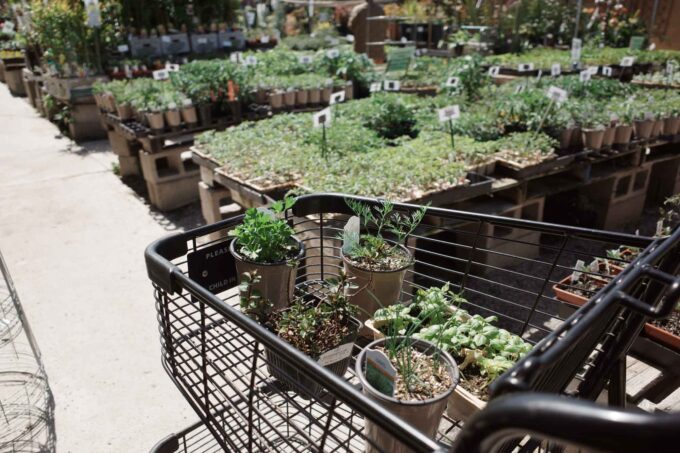
The quickest way to grow herbs is to purchase seedlings from your local nursery. I recommend Laguna Hills Nursery and OC Farm Supply. Grocery stores may also sell potted herbs, but be cautious as some are grown hydroponically and cannot be repotted. Always check the label before planting.
Another option is to take cuttings from a mature plant, place them in a glass of water near a sunny window, and wait for roots to develop before planting them in soil.
Herb Container Material

When selecting containers for indoor herbs, prioritize good drainage. Most plants thrive in moist, well-draining soil, so ensure your pots have sufficient drainage holes. Here are some popular container materials:
- Terracotta: Breathable and mid-to-heavy weight, these pots help prevent overwatering. Ideal for herbs like oregano and green onions.
- Plastic: Lightweight and affordable, but be cautious of overwatering. Additional holes can be drilled for improved drainage.
- Ceramic: Heavier and can be either glazed or unglazed. Unglazed ceramic is breathable and suitable for moisture-loving herbs like basil.
- Metal: Lightweight and affordable, but may heat up in sunlight. Ensure adequate drainage by drilling holes.
Herb Container Drainage Holes
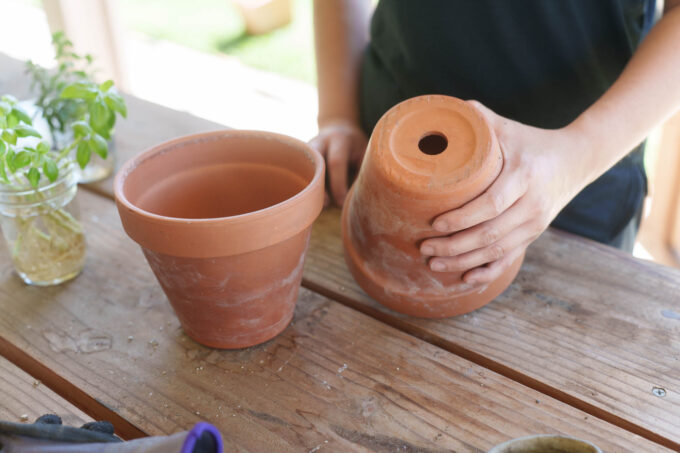
Before planting your indoor herbs, ensure your pots have adequate drainage by following this guide:
- Smaller pots (6 inches in diameter and below) can have one drainage hole.
- Pots larger than 6 inches should have at least 2-3 drainage holes, each ¼” in diameter.
- Pots larger than 15 inches should have 3-4 drainage holes, each ¼” in diameter.
If using plastic or metal pots, you can create additional holes with a power drill. Terracotta pots are typically porous, so no adjustments are needed. For glazed ceramic pots, a specific drill bit may be required to avoid cracking.
Additionally, ensure your pot has a saucer to catch excess water, keeping it slightly elevated to prevent soil saturation.
Type of Soil to Use

Using high-quality potting soil is crucial for the success of your indoor herb garden. Understanding the specific soil needs of each herb, particularly regarding moisture and drainage, is essential.
Well-draining soil allows water to soak in without pooling at the bottom, while sharp draining soil enables quick water movement through the soil. Here’s a breakdown of soil needs for various herbs:
- Basil: Well-draining, moist soil with nitrogen-rich fertilizer.
- Mint: Well-draining, slightly moist soil; generous watering is needed, but no fertilizer is necessary.
- Chives: Well-draining, moist soil; all-purpose fertilizer as needed.
- Parsley: Well-draining, somewhat moist soil; no fertilizer needed.
- Oregano: Well-draining soil; allow to dry before watering; all-purpose fertilizer as needed.
- Green Onions: Sharp draining, slightly moist soil; nitrogen-rich fertilizer is beneficial.
You can create your own soil blend using topsoil, compost, perlite for drainage, and coco coir for moisture retention, but purchasing a high-quality potting soil is often more convenient. I recommend FoxFarm Ocean Forest potting soil for its nutritional benefits and excellent drainage properties.
Which Herbs Can Be Potted Together or Need Individual Pots?
For optimal growth, I prefer to use individual pots for each herb, allowing them to adapt to their specific soil needs. However, some herbs, like parsley and basil, can thrive together due to their similar moisture requirements.
On the other hand, herbs like mint and lemon balm should be kept in separate containers, as they tend to grow rapidly and can overtake other plants.
How to Plant Herbs Indoors
Follow this step-by-step guide to start your seeds indoors. Once your herb seedlings have developed at least one to two sets of true leaves, they are ready for transplanting:
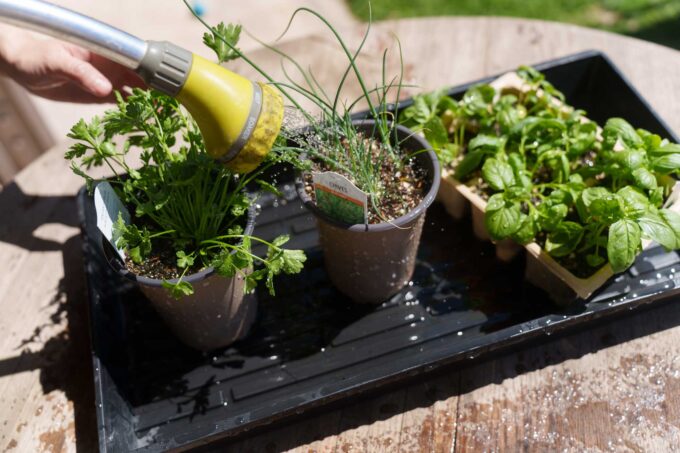
- Moisten the soil before adding it to the pot.
- Line the pot with burlap or another breathable material to prevent soil from escaping.
- Fill the pot with soil according to the plant’s root length and height.
- Gently remove the herb from its original container by squeezing the bottom. Check the roots for root-bound conditions and loosen them if necessary.
- Place the herb in the center of the pot.
- Add more soil around the plant until it reaches the top of the pot, ensuring the base of the herb is covered.
- Repeat the process for all seedlings.
- Finally, move the potted herbs to their new home, ideally next to a sunny window or under a grow lamp.
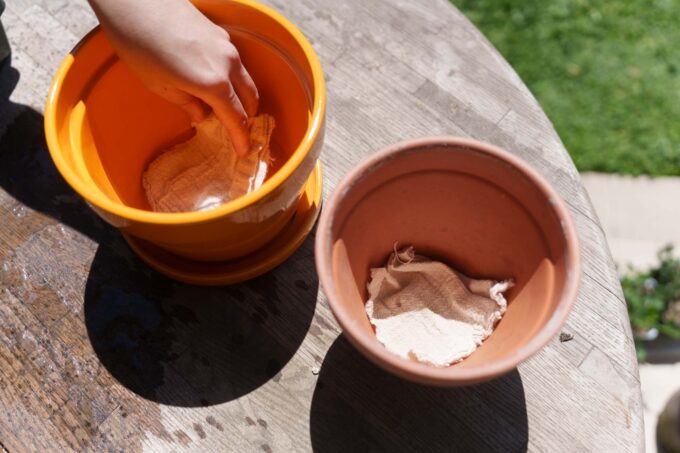
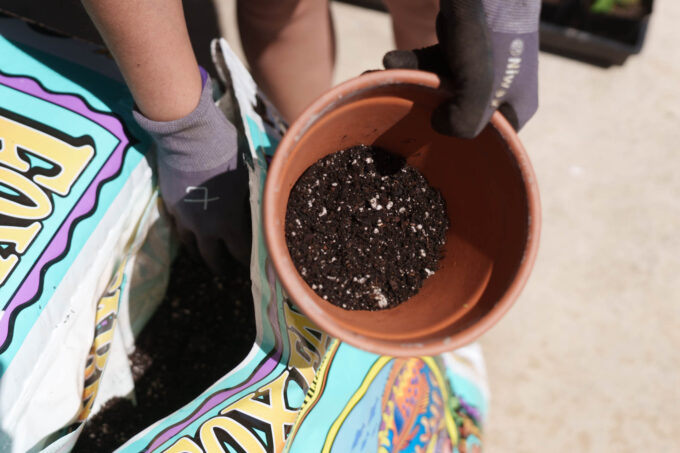
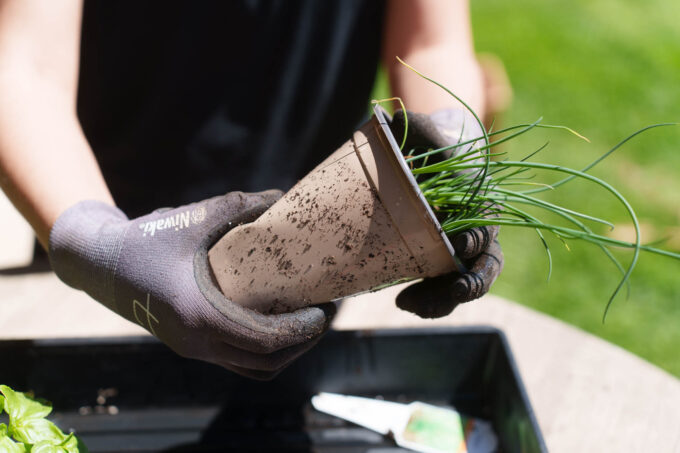
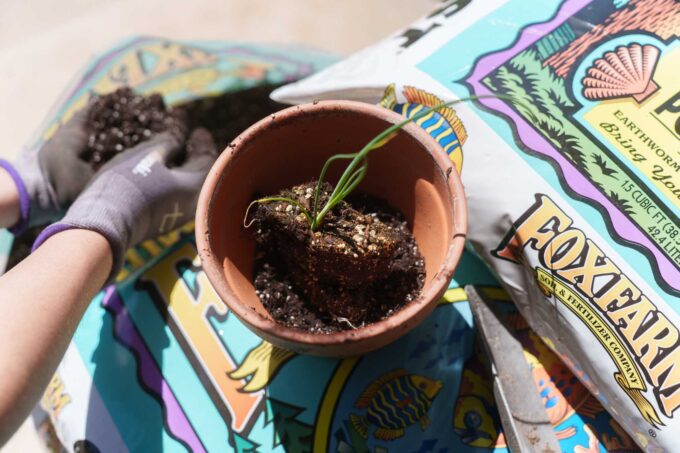
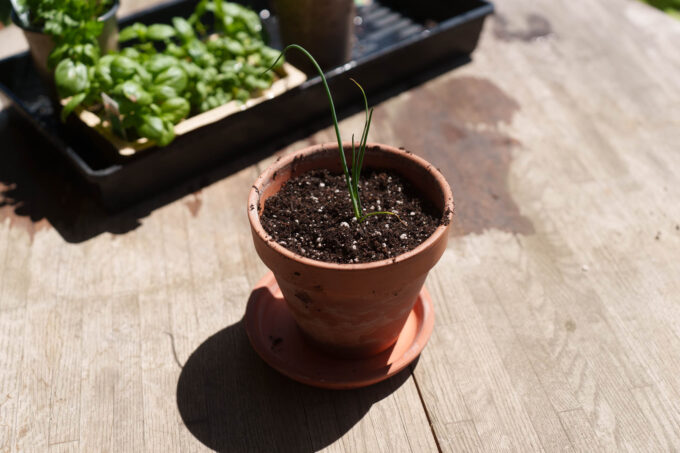
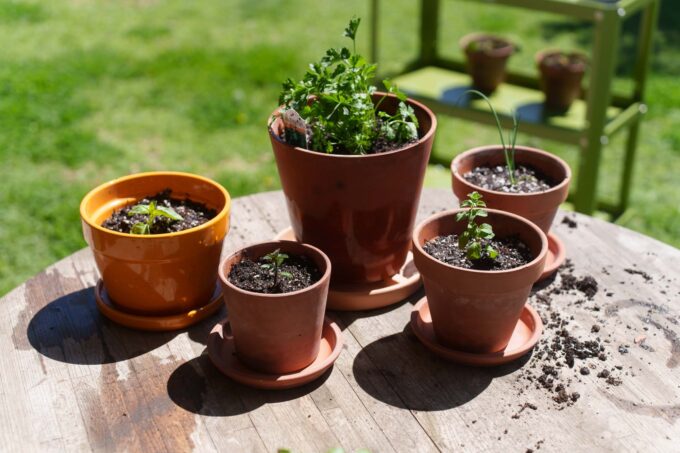
Upkeep for Your Indoor Herb Garden
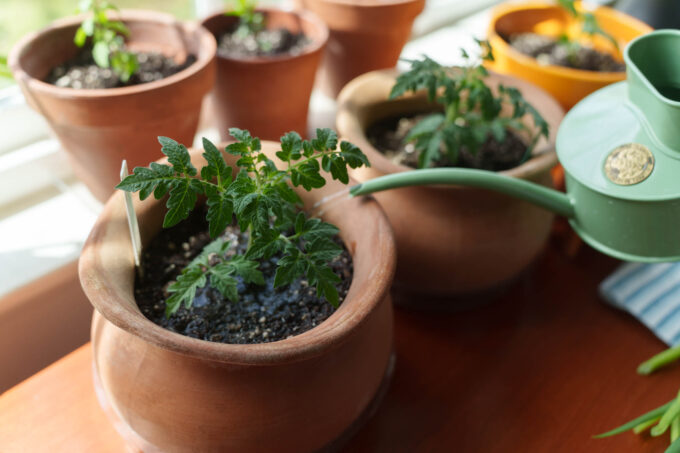
- Watering frequency varies by herb type; check the top inch of soil. If it’s dry, it’s time to water.
- Fertilizing needs depend on the herbs you are growing. For basil and chives, an all-purpose fertilizer is necessary, while mint typically does not require fertilization.
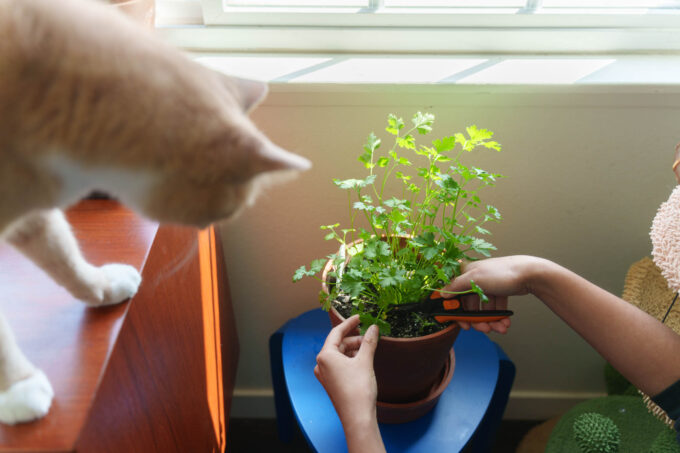
- Pruning encourages growth and enhances air circulation, resulting in healthier plants. If you regularly harvest your herbs, extensive pruning may not be necessary. Start by pruning the outer bottom leaves first.
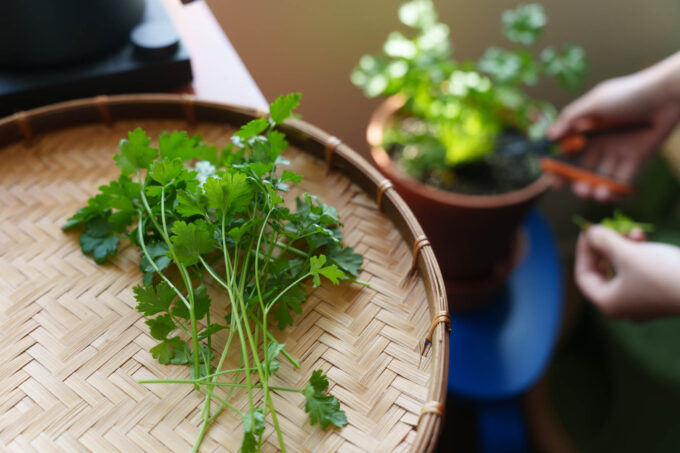
- Begin harvesting when your plants have developed enough leaves and a sturdy root system. Harvesting can start when the plants are at least 3-4 inches tall and have two sets of true leaves.
Recipes with Herbs
Now that you’re equipped with the knowledge to grow herbs, here are some favorite recipes to incorporate them:

